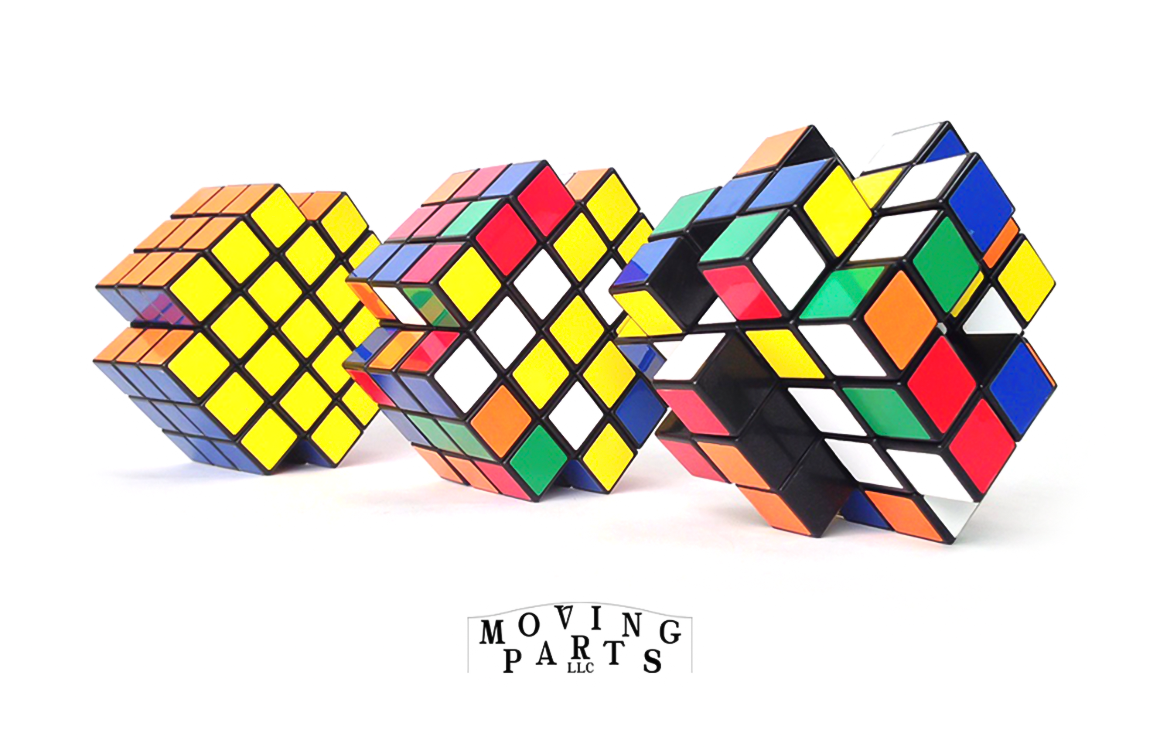You created X-Cube in 2012 when you were just 19. What triggered you to do that?
I’ve been a Rubik’s Cube fan since I was in 7th grade. I got into puzzle modification in 8th grade and began to customize my Rubik’s Cube by adding pieces to it. In college I had access to a 3D printer and that’s when things really got interesting. I was hooked.

You funded production of X-Cube through Kickstarter. Tell me about your crowdfunding experience. Would you go that route again in the future?
My experience with Kickstarter was really positive. It had its challenges, certainly. When I launched the campaign, I had underestimated how important it was to have other online resources. I didn’t have a website or any social media presence. That was a bit of a scramble. To achieve success in crowdfunding, it takes a lot of pushing to get the word out. I was lucky; Kickstarter featured X-Cube in its newsletter. It captured a lot of attention really quickly after that. There were many sleepless nights trying to ensure that everything went off without a hitch.
While I did have a positive experience with crowdfunding, I’m not sure I would do it again. At this point, I wouldn’t have to because I could self-finance a new project but there are other ways to launch a project that are less labour intensive. Finding the right investor has its own challenges but it isn’t terribly difficult to find a good match through networking. Pitching a new product to a large company is also something to consider. If a person can get a purchase order for their product, it isn’t hard to gain attention.
What is it about Rubik’s Cube that continues to spark the interest of the public and inspire designers to build on Rubik’s creation?
It’s just such a good puzzle, a great toy. They are beautifully designed, tactile, and challenging to solve. There’s a brainy element to it so it feels amazing to solve the puzzle. It’s like climbing a mountain – daunting at first, but achievable. I think many people give up too soon. Adults tend to put limits on themselves by underestimating their ability to solve the puzzle. I think kids excel at toys like Rubik’s Cube because they don’t have those preconceptions. 
Through your company, Moving Parts, you offer two other 3-D logic puzzles: X2 and Boob Cube. Tell me about those.
I created X2 on a dare to add another layer of difficulty to the X-Cube. It’s been on my mind as long as the X-Cube has. Once I had the money to make it a reality, I went for it. I took it to a toy trade show and Barnes and Noble picked it up for their stores.
The Boob Cube came about as a bit of a joke. I made it as a one-off for a friend’s mother. She’d seen a similar 3D puzzle in the 1980s that was a limited edition. She didn’t buy it at the time and said she always regretted it. After making one, I made a few more. Too many, really. My business partner thought it was an amazing idea so we took it to a trade show and it, too, was picked up by Barnes and Noble. We cheekily state on the package that it’s the “hardest puzzle in the world”.

What’s your best time solving X-Cube and Rubik’s Cube?
I’ve solved the X-Cube in 1.39 seconds. My best time for Rubik’s Cube is 18.65 seconds. That may sound impressive but I’ve been to a lot of Rubik’s Cube competitions that put my record times to shame. I’ve seen the fastest people in the world solve the puzzle and it’s just astounding. To be truly competitive, you have to consistently be able to solve Rubik’s Cube in under ten seconds. It’s hard but attainable with practice. There are various basic techniques to learn. Once you master those, you can develop and apply your own techniques.
There are also “fewest moves” competitions. Rather than the winners being determined by time, competitors are judged based on how few turns it takes to solve the puzzle. I think the record was set at 20 turns.
Twisty puzzles are great for the brain. There are small victories along the way and always something to learn and improve upon. Anyone can play and anyone can get really good with practice. Don’t give up so soon!

Are you up for the challenge? Head to Moving Parts to learn more about the X-Cube, X2, and Boob Cube.





